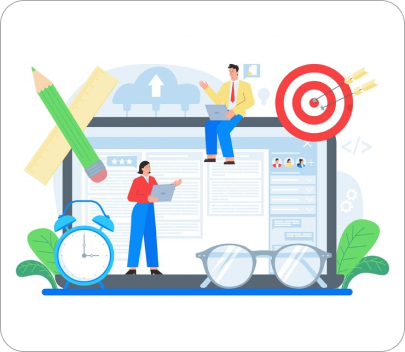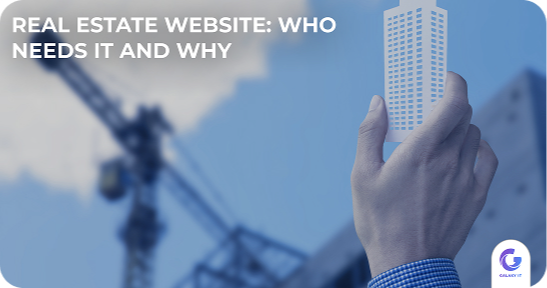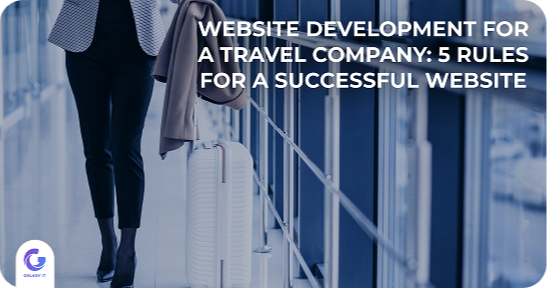What is SaaS Marketing? The 2024 Guid
- 29.05.2024
- 1 views
- 15 min
The pivotal elements of SaaS marketing in 2024
By 2024, the SaaS industry had reached unprecedented levels of dynamism. SaaS marketing had evolved from a passing trend to an indispensable strategy for every emerging software venture, driven by the imperative to enhance customer value. Here are the pivotal elements of SaaS marketing in 2024:
- Customer-Centric Storytelling: Embracing narratives tailored to specific sectors like healthcare SaaS or educational technology platforms.
- Data-Informed Decision Making: Harnessing insights to craft personalized user experiences.
- Omni-Channel Engagement: Ensuring seamless connectivity with customers across all interaction points.
In the midst of this thriving market, tools such as Plerdy emerged as the benchmark for Conversion Rate Optimization (CRO) and User Experience (UX), empowering SaaS marketers to delve into user behavior, refine interfaces, and orchestrate compelling campaigns. It's not merely about flashy features; it's about forging authentic connections with your audience.
Definition of SaaS
Software as a Service (SaaS) has revolutionized the traditional software market. Fundamentally, SaaS represents a business paradigm where software vendors deliver applications via the Internet, eliminating cumbersome installations, tedious updates, and complex licensing. This model bridges the gap between software providers and end-users, fostering an ongoing relationship built on continuous interaction, feedback, and mutual progress. Such partnerships pave the way for innovative customer-centric marketing strategies.
Consider various industry sectors as examples:
- HR and Recruitment: BambooHR offers a comprehensive HR management suite, highlighting the simplicity of employee data management and streamlined hiring processes in its marketing.
- Accounting and Finance: QuickBooks Online provides real-time financial insights, with marketing campaigns emphasizing its user-friendly interface and time-saving functionalities.
- Project Management: Asana promotes collaborative features and effortless task tracking to differentiate its service in the project management niche.
These SaaS providers tailor their marketing approaches to address specific pain points of their target audience. By blending an understanding of consumer needs with the inherent flexibility of the SaaS model, these companies demonstrate the tangible benefits SaaS brings to their clients' operations.
Importance of Marketing in SaaS
 Within the SaaS realm, marketing emerges as the pulsating core that infuses vitality into every aspect of the enterprise. The very essence of SaaS – scalable, subscription-based, and internet-centric – necessitates an agile, customer-centric marketing approach. Marketing in the SaaS sphere serves a dual purpose: firstly, to raise awareness of the service among potential clientele, and secondly, to guide these prospects through the journey from discovery to conversion and, ultimately, to customer retention. Central to these endeavors is the comprehension of potential customers' distinct pain points and the demonstration of how the SaaS solution can alleviate them.
Within the SaaS realm, marketing emerges as the pulsating core that infuses vitality into every aspect of the enterprise. The very essence of SaaS – scalable, subscription-based, and internet-centric – necessitates an agile, customer-centric marketing approach. Marketing in the SaaS sphere serves a dual purpose: firstly, to raise awareness of the service among potential clientele, and secondly, to guide these prospects through the journey from discovery to conversion and, ultimately, to customer retention. Central to these endeavors is the comprehension of potential customers' distinct pain points and the demonstration of how the SaaS solution can alleviate them.
Consider these instances from various industries:
- Customer Relationship Management (CRM): Salesforce, a distinguished SaaS provider, utilizes marketing to exhibit its all-inclusive platform simplifying customer management.
- E-commerce Platforms: Shopify leverages marketing to spotlight its straightforward setup, extensive customization options, and comprehensive e-commerce features.
- Communication Tools: Slack employs marketing to underscore its ability to streamline team communication and collaboration.
The triumph of these SaaS giants underscores the pivotal role of marketing in customer acquisition, loyalty building, and fostering expansion within the SaaS domain. In a landscape teeming with competing offerings, effective marketing can determine whether a company remains an anonymous entity or ascends to become a trusted, indispensable solution in its customers' arsenal. Hence, marketing in SaaS isn't merely important – it's an absolute imperative.
SaaS Marketing Strategies with SEO & PPC & SMM
1. Content Marketing for SaaS
Content marketing is the cornerstone of effective SaaS marketing strategies. It revolves around creating and sharing valuable, relevant information to attract and engage a precisely defined target audience. The ultimate goal is to convert audience members into loyal advocates who actively promote your business. SaaS companies utilize content marketing to address their customers’ pain points, build trust, and establish themselves as thought leaders. The content acts as a magnet, drawing potential customers in and nurturing them through the sales funnel. Here are a few compelling examples:

- HubSpot: The CRM platform's blog offers actionable advice on a wide array of topics, from sales tips to marketing strategies, reinforcing their position as a thought leader.
- Slack: The team collaboration app regularly publishes case studies highlighting how companies of different sizes and industries use their platform, providing real-world examples of its benefits.
- Asana: The project management tool frequently releases webinars and tutorials, helping users navigate their platform and demonstrating ongoing value.
- Zapier: The automation tool maintains a comprehensive learning center with how-to guides, fostering user competency and encouraging platform utilization.
In the SaaS industry, content marketing doesn’t just sell a product but a solution. It's about demonstrating a deep understanding of customer challenges and presenting your SaaS as the ideal tool to overcome them.
2. SEO for SaaS
In the bustling SaaS marketplace, SEO serves as the guiding beacon directing potential customers to your offerings. Skillfully employing SEO tactics can enhance your online visibility, drive organic traffic, and elevate your brand amidst the cacophony of competition. For SaaS businesses, mastering SEO is pivotal for customer acquisition and sustained growth. Here are key steps to optimize your SEO strategy:
- Keyword Research: Understanding the search terms your potential customers use is paramount. Companies like Salesforce might target keywords such as CRM software, customer management tools, or best sales tracking apps.
- On-page Optimization: Enhancing features like title tags, meta descriptions, and header tags can significantly boost your exposure. Asana, for instance, meticulously crafts these elements for maximum ranking potential.
- Quality Content: Consistently publishing engaging, informative content rich with relevant keywords fosters trust with both users and search engines. Mailchimp’s blog stands as a prime example, offering invaluable marketing insights and resources.
- Link Building: Acquiring high-quality backlinks to your site enhances your authority and ranking. Dropbox, for example, benefits from numerous links from authoritative tech sites.
- Technical SEO: Ensuring a swift, secure, and mobile-friendly website enhances user experience and amplifies your SEO performance. Shopify excels in this regard, providing a remarkably responsive and user-friendly platform.
In essence, SEO for SaaS transcends mere high search result rankings. It's about establishing connections with potential customers, addressing their needs, and guiding them to the right solution – your SaaS offering.
3. Social Media Marketing for SaaS
Social media&'s omnipresence enables SaaS businesses to connect with customers in the spaces they already frequent. Astute SaaS companies leverage social media for diverse strategic aims:
- Community Building: Brands like Buffer foster vibrant online communities by sharing compelling content and fostering dialogue among followers.
- Customer Support: Platforms such as Zendesk and Intercom utilize social media as a swift customer service channel, promptly addressing user queries and issues.
- Brand Awareness: Canva showcases user-generated content on Instagram, forging connections with customers and showcasing product capabilities.
- Lead Generation: B2B SaaS companies like Slack and Salesforce harness LinkedIn's networking potential for thought leadership and lead generation.
- Product Updates: Adobe utilizes social media to announce product updates, share tips, and highlight new features, keeping users informed and engaged.
Social media marketing, an integral facet of SaaS marketing, extends beyond content provision; it's about fostering relationships with clients, nurturing loyalty, and transforming them into enthusiastic brand advocates. It's a vehicle for integrating your SaaS into customers' daily lives, transcending it from a mere product to an indispensable part of their routines.
4. PPC and Paid Social Advertising for SaaS
PPC and Paid Social Advertising are robust digital marketing strategies that wield significant influence in the SaaS industry. Pay-per-click (PPC) advertising involves showcasing your SaaS solutions on search engines, while paid social media ads propel your brand onto social platforms frequented by your desired audience. Numerous SaaS companies thrive through these avenues:

- Google Ads: Salesforce utilizes this platform to expand its presence on search engines, positioning its CRM software prominently in search results.
- LinkedIn Ads: B2B SaaS enterprises like Adobe capitalize on LinkedIn ads to attract professional audiences seeking advanced software solutions.
- Facebook Ads: B2C-focused SaaS providers such as Spotify harness Facebook's powerful targeting capabilities to connect with potential customers based on preferences, behaviors, and demographics.
- Twitter Ads: Mailchimp frequently employs Twitter to promote its email marketing software, capitalizing on the platform's extensive reach and engagement potential.
- Instagram Ads: Canva leverages Instagram to spotlight its intuitive design software, tapping into the platform's visually-oriented user base.
Whether promoting customer relationship management software or productivity tools, these marketing strategies offer a prime opportunity to capture the attention of your target audience precisely where they are most active. The efficacy of PPC and paid social advertising lies in their ability to precisely reach potential customers, nudging them towards your SaaS offerings amidst a fiercely competitive digital landscape.
Conclusion
As we navigate the dynamic 2024 SaaS landscape, it's evident that businesses are thriving by embracing a blend of innovative marketing strategies and a steadfast commitment to customer engagement. This comprehensive guide has explored a spectrum of tactics, from harnessing the power of video demos to leveraging micro-influencers, showcasing the diverse array of tools available at your disposal.
In SaaS marketing, it's not just about clicks and conversions; it's about forging meaningful relationships and understanding the needs of your audience. We've delved into effective techniques, spanning from ABM strategies to crafting compelling content with the assistance of BuzzSumo. Here's a brief summary:
- Personalized content to foster customer retention
- Harnessing tech platforms like TikTok and Wistia for video hosting
- Streamlining lead generation through investment in educational resources
What's next on your SaaS journey? Consider integrating Plerdy's SEO & UX analysis tool to gain a competitive edge. By gaining insights into customer behavior, you can optimize your website, accelerate growth, and achieve a higher return on investment. Don't just observe the trends—be at the forefront of them with Plerdy's innovative solutions.
With insights from industry experts and actionable advice, this guide has served as your roadmap to success in the SaaS market. We trust you've found value in it and are eager to witness you implementing these strategies. Remember, your customers are waiting, so seize the opportunity to cultivate those connections today!









